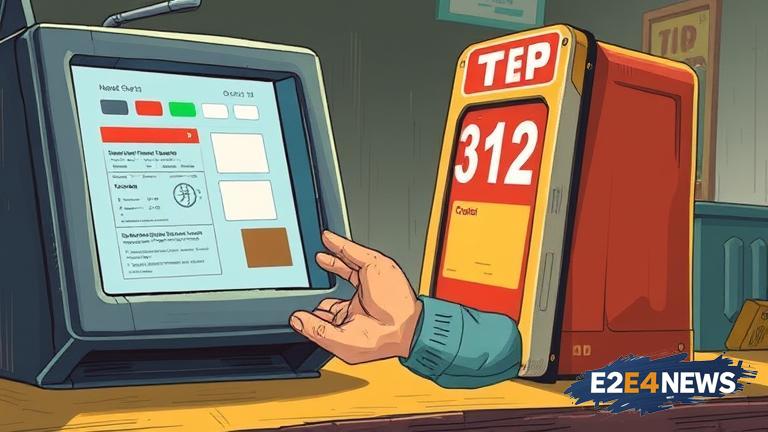Tip creep, a term coined to describe the growing practice of being asked to tip for even the most mundane transactions, has become a ubiquitous part of American consumer culture. From coffee shops to restaurants, and even parking meters, the phenomenon of machine tipping has taken hold, leaving many to wonder what’s behind this trend. One reason for the rise of tip creep is the increasing use of technology in point-of-sale systems, which allows businesses to easily prompt customers for tips. This, combined with the growing gig economy and the decline of traditional employment, has led to a shift in the way we think about gratuities. In the past, tipping was typically reserved for exceptional service, but now it’s becoming the norm for even routine transactions. Some argue that tip creep is a way for businesses to shift the burden of paying their employees a living wage onto the consumer, while others see it as a way to show appreciation for good service. However, the practice has also been criticized for being overly aggressive and guilt-tripping, with some consumers feeling pressured into leaving a tip even when they don’t feel it’s warranted. The rise of tip creep has also led to a blurring of the lines between what constitutes good service and what doesn’t, with some consumers feeling that they’re being asked to tip for simply doing business. Furthermore, the trend has raised questions about the fairness of tipping practices, with some arguing that it’s unfair to expect consumers to subsidize employee wages. Despite the controversy, tip creep shows no signs of slowing down, with many businesses continuing to adopt the practice as a way to increase revenue. In fact, some companies are even using data and analytics to optimize their tipping prompts, making it more likely that consumers will leave a tip. The impact of tip creep on consumer behavior is also worth noting, with some studies suggesting that it can lead to a phenomenon known as ‘tip fatigue,’ where consumers become desensitized to the practice and start to push back against it. Additionally, the trend has raised concerns about the potential for tipping to become a substitute for fair wages, rather than a supplement to them. As the debate around tip creep continues, it’s clear that the practice is here to stay, at least for the time being. But as consumers, it’s worth being aware of the potential implications of this trend and to think critically about when and how we choose to tip. The rise of tip creep is also a reflection of the changing nature of work and the economy, with more people turning to gig work and freelance employment. This shift has led to a re-evaluation of the traditional employer-employee relationship and the role of gratuities in it. In the US, the minimum wage has not kept pace with inflation, leading to a situation where many workers rely on tips to make ends meet. The practice of tip creep has also been linked to the decline of unionization and the erosion of worker rights, with some arguing that it’s a way for businesses to avoid paying their employees a fair wage. Despite these concerns, many consumers continue to see tipping as a way to show appreciation for good service, and the practice remains an important part of American consumer culture. However, as the trend continues to evolve, it’s worth considering the potential long-term implications of tip creep and how it may shape the way we think about work, wages, and gratuities. The rise of tip creep has also led to a number of creative solutions, with some businesses opting out of the practice altogether and instead choosing to pay their employees a higher wage. Others have implemented alternative models, such as a service charge, which can help to reduce the burden on consumers and promote a more equitable distribution of wealth. Ultimately, the future of tip creep remains uncertain, but one thing is clear: it’s a trend that’s here to stay, and it’s up to consumers to think critically about the implications and to demand fair wages and equitable treatment for all workers.





